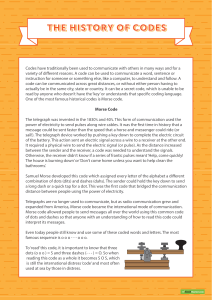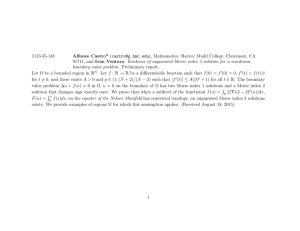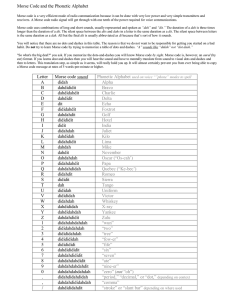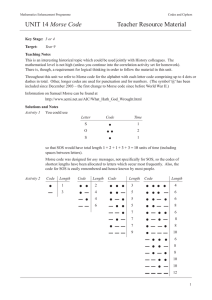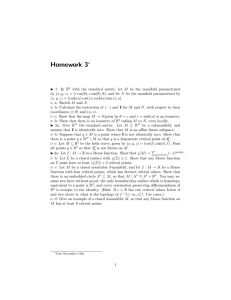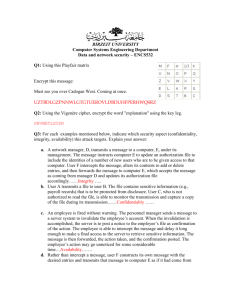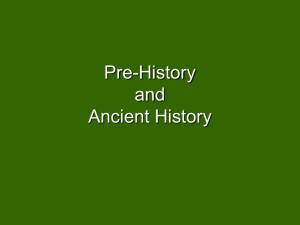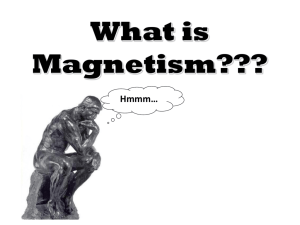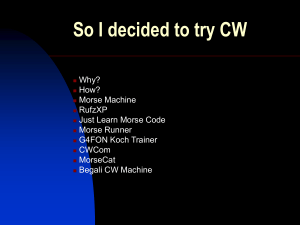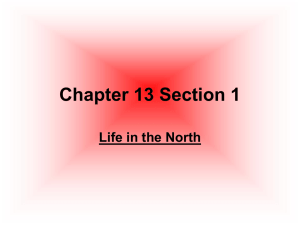Introduction - Functional Mathematics
advertisement
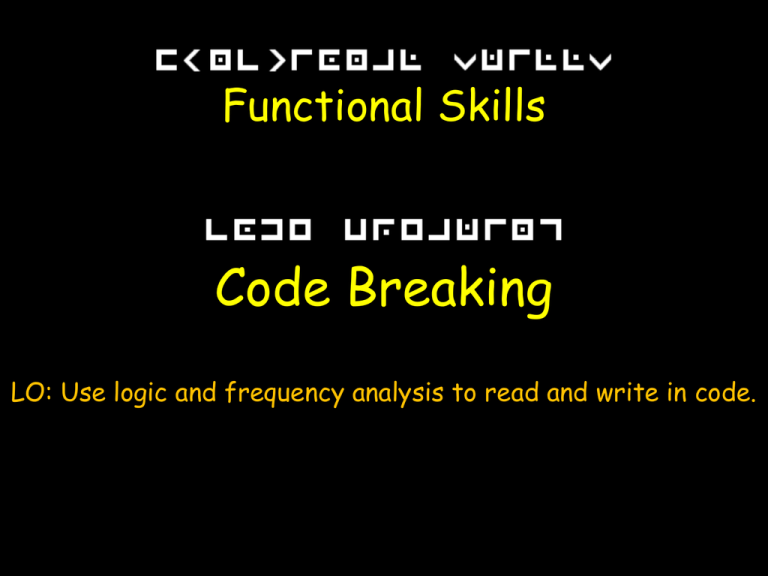
Functional Skills Code Breaking LO: Use logic and frequency analysis to read and write in code. LO: Use logic and frequency analysis to read and write in code. Codes appear for many reasons. They are usually used to hide information. One of the biggest places for codes is on the internet. Everything you send on the internet is encoded so that hackers do not have access to everyone's private information. LO: Use logic and frequency analysis to read and write in code. We are going to look at substitution codes. These are where letters are changed to make things harder to read. During one of Sherlock Holmes’s adventures, he comes across “The Dancing Men Cipher” LO: Use logic and frequency analysis to read and write in code. Try to work out the following message… LO: Use logic and frequency analysis to read and write in code. One of the most common codes people know something about is Morse Code. Before the internet there were phones… ….and before phones there were telegrams… … and telegrams were sent using Morse Code. LO: Use logic and frequency analysis to read and write in code. Morse Code is very hard to hear and work out without lots of practice. It is made up of quick clicks for dots, longer clicks for dashes, short breaks between letters, and longer breaks between words. Listen to the sound of a short Morse Code Message. Then listen again to try and keep up with dots, dashes and spaces. LO: Use logic and frequency analysis to read and write in code. This is what you should have got: –– ––– ·–· ··· · –·–· ––– –·· · Listen to the sound again and see if you can follow along. LO: Use logic and frequency analysis to read and write in code. Task 1 – On Your Own You are going to be give a sheet with these codes on to decipher for yourself. By each piece of coding the cipher key is also included. LO: Use logic and frequency analysis to read and write in code. Another way to make a cipher code is to mix up the letters instead of using symbols. For example suppose I change the letters around so… E become L H becomes X L becomes P O becomes E …then the word HELLO becomes… XLPPE LO: Use logic and frequency analysis to read and write in code. The reason why this is a good way to make a code is that there are lots of ways of mixing up the alphabet. How many ways do you think we could mix up all the letters? Over 400, 000, 000, 000, 000, 000, 000, 000, 000! To say that number out loud it is: Four Hundred Septillion Interesting fact: If you read that number in Britain before 1974 the correct way to say it would have been four hundred quadrillion. In European countries you would still use the old way, but since 1974 most English speaking countries now use what is called the short system (which was previously referred to as the American System). LO: Use logic and frequency analysis to read and write in code. However! Mathematicians can crack the code using something called frequency analysis. LO: Use logic and frequency analysis to read and write in code. What does this graph show us? How could we use this to work out what a coded message says? LO: Use logic and frequency analysis to read and write in code. Task 2 – As a class We are going to see if we can work out a coded sheet as a class. You are going to be given a sheet of code and will be responsible for counting the number of times you see a specific letter. LO: Use logic and frequency analysis to read and write in code. Task 2 – As a class We are going to fill in a table using the information from the letters you have just counted and the graph above. LO: Use logic and frequency analysis to read and write in code. Task 2 – As a class LO: Use logic and frequency analysis to read and write in code. Now lets try to read it! LO: Use logic and frequency analysis to read and write in code. Task 3 – On your own or in Pairs You have a choice of tasks to finish you off: 1. Make an A3 poster of the codes we have been looking at explaining how they work. 2. Try to crack a harder code sheet that is made up of a combination of mixing up letters and symbols. 3. Write a short passage and create it in code. (This could be using symbols, mixing letters, or a combination of the two).
